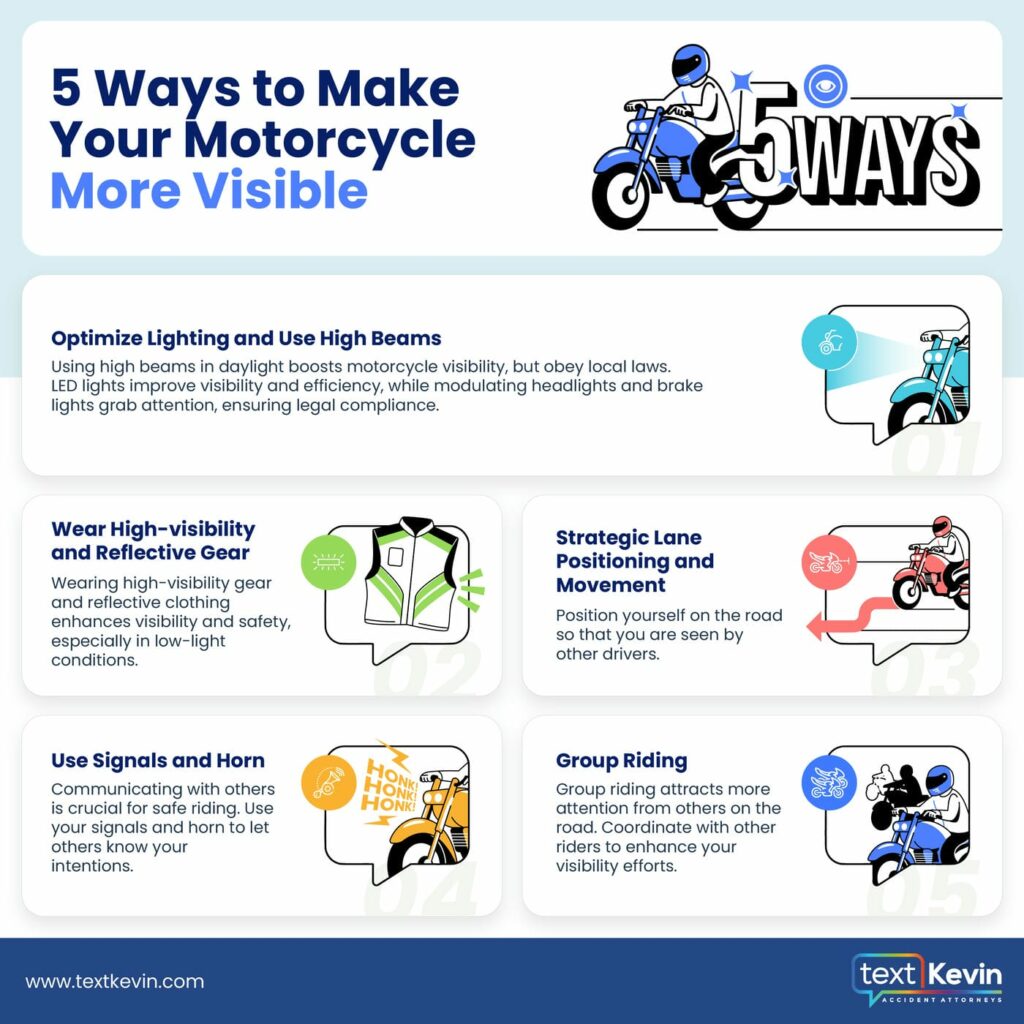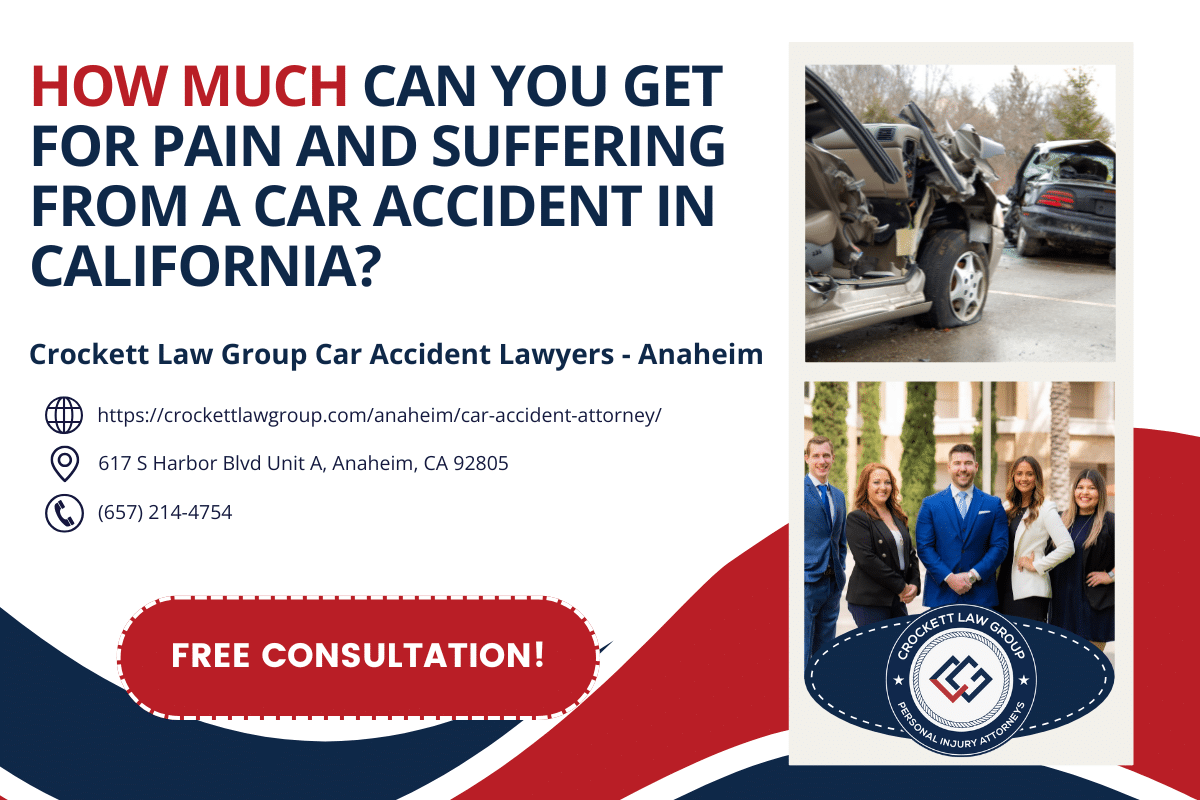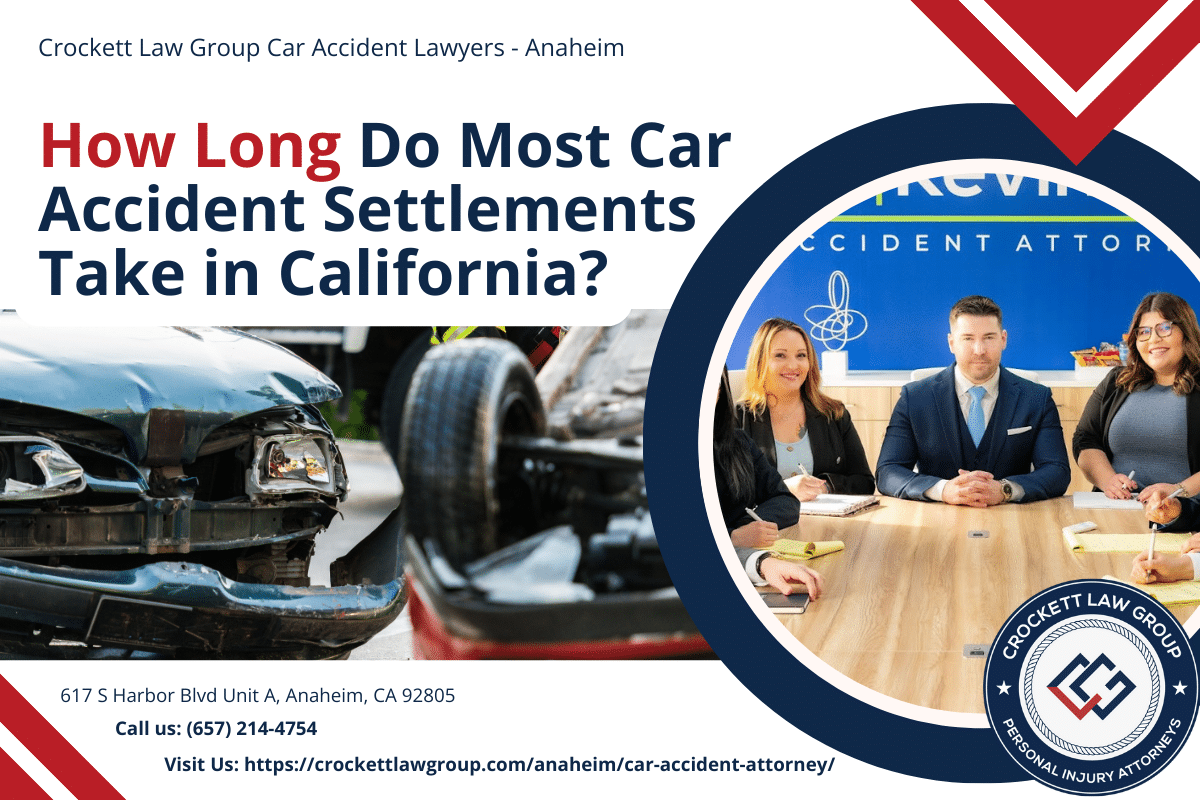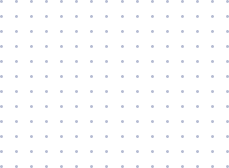Riding a motorcycle brings a unique sense of freedom, but it also requires taking extra steps to ensure safety. Visibility is a key factor in avoiding accidents, as being seen by other road users can significantly reduce the risk of collisions.
This guide offers practical advice on making your motorcycle more visible to others, enhancing your safety on the road.
Factoid About Motorcycle Accidents in the US
| Factoid | Statistic | Description |
|---|---|---|
| Risk of Fatality | 29x more likely | Motorcyclists are 29 times more likely to die in a crash than passenger car occupants per vehicle mile traveled. |
| Helmet Effectiveness | 37% for riders, 41% for passengers | Helmets are estimated to be 37% effective in preventing fatal injuries to riders and 41% for passengers. |
| Alcohol Impairment | Significant portion | A significant portion of motorcyclists involved in fatal crashes had BACs over the legal limit. |
| Speeding | Higher percentage | A higher percentage of motorcyclists were speeding in fatal crashes compared to drivers of other vehicle types. |
| Licensing | Notable percentage | A notable percentage of motorcyclists involved in fatal crashes were found to be riding without a valid motorcycle license. |
1. Optimize Lighting and Use High Beams
High beams during daylight hours make your motorcycle more noticeable to other drivers, acting as a beacon of awareness. This practice, however, should align with local laws, as regulations around high beam use can vary by location.
LED lighting further improves visibility, with its brighter and more efficient light output compared to traditional bulbs.
Lastly, modulating your headlight and brake light draws attention through pulsing lights, signaling your presence more effectively in traffic.
Daytime Use of High Beams
Turning on high beams during the day significantly increases a motorcycle’s visibility. This method helps in catching the attention of other road users quickly, akin to wearing a bright-colored outfit in a crowded place.
It’s crucial, however, to check local regulations to ensure this practice is allowed in your area.
Add LED Lighting
LED lights offer superior visibility, durability, and energy efficiency. Incorporating LED lights into your motorcycle not only makes you more visible but also reduces the need for frequent bulb replacements, making it a smart upgrade for any rider focused on safety and maintenance.
Headlight and Brake Light Modulators
Modulators for headlights and brake lights create a flashing effect that captures attention more effectively than steady lights. This technology enhances your visibility, especially at intersections where the risk of accidents is higher.
Compliance with Federal Motor Vehicle Safety Standards ensures the legal use of these modulators.
2. Wear High-Visibility and Reflective Gear
Visibility isn’t just about the lights on your motorcycle; it’s also about making yourself seen. Wearing high-visibility and reflective gear is like having a personal beacon that signals your presence to others on the road. This section delves into the types of gear that can make you stand out, ensuring you’re seen by drivers, even in low-light conditions.
Choice of Helmet and Clothing
When it comes to riding a motorcycle, your choice of helmet and clothing does more than just reflect your personal style—it plays a critical role in your safety and visibility. Opting for gear that stands out can make a significant difference in how easily other road users can see you. Let’s explore some key considerations for selecting the right helmet and clothing for your rides.
- Choose a helmet that’s bright and reflective. Helmets with high-visibility colors like neon yellow, bright orange, or even white can greatly enhance your visibility compared to darker colors.
- Wear clothing made from reflective or brightly colored material.
- Look for gloves with reflective materials or bright colors, especially on the back of the hand, which is more visible to others when you signal.
- High-visibility or reflective strips on boots can catch the light from vehicles, adding another point of visibility.
Utilizing Reflective Tape
Reflective tape is a versatile tool for enhancing visibility. It can be applied to helmets, clothing, and even parts of your motorcycle.
The tape works by reflecting light directly back to its source, making it especially useful at night or in low-light conditions.
Strategic placement on moving parts, like wheel rims or the back of your helmet, can create dynamic, eye-catching signals to drivers, ensuring you’re noticed.
3. Effective Use of Signals and Horn
Communicating with other road users is crucial for safe riding. Signals and the horn are not just accessories; they’re essential tools for making your intentions known and drawing attention when necessary.
Signaling Intentions Clearly
Always use your turn signals, even if it seems unnecessary. It’s a simple action that can prevent confusion and accidents.
Turn signals are designed to catch the eye, alerting drivers to your planned movements.
Making signaling a habit ensures that you’ll remember to use it when it’s most critical, helping others anticipate your actions and react accordingly.
Assertive Use of Horn
The horn is another powerful tool for making yourself heard.
A quick beep can alert drivers to your presence, especially in situations where they may not see you, like blind spots or intersections.
Choose a horn that has a sound distinct enough to cut through traffic noise but isn’t so aggressive that it startles other road users.
Proper horn use can be the difference between being overlooked and getting noticed in time.
4. Strategic Lane Positioning and Movement
Being visible on a motorcycle involves more than just your gear and the lights on your bike. Where and how you position yourself on the road plays a crucial role in ensuring you’re seen by other drivers.
Lane Positioning for Maximum Visibility
Your position within the lane can significantly affect how well other drivers see you.
The general advice is to ride in the part of the lane where you are most visible to drivers ahead and behind you, as well as to those in adjacent lanes.
The left third of the lane often provides the best visibility to the majority of traffic, including the rearview mirrors of cars in front of you.
However, this can vary depending on the situation, such as the layout of the road and the traffic around you.
Being flexible and aware of your position can make a big difference in how well others notice you.
Moving Within the Lane to Attract Attention
Movement within your lane can also help attract the attention of other drivers.
Changing your position within the lane, especially when approaching intersections or in heavy traffic, can help catch the eye of other road users.
This is because the human eye is drawn to movement. By moving within your lane, you create a dynamic presence that is more likely to be noticed.
Remember, the goal is to be predictable yet visible, so any movements should be smooth and deliberate, ensuring that you don’t compromise your safety or that of others on the road.
5. Group Riding and Additional Safety Measures
Riding in a group can significantly enhance your visibility on the road. There’s strength in numbers, and a group of motorcycles is much easier to notice than a single rider. This section explores the benefits of group riding and other safety measures that can help make you more visible.
The Safety in Numbers
Group riding naturally attracts more attention from other road users.
A formation of motorcycles is not only larger but also offers multiple points of light and reflection, making the group highly visible compared to a single motorcycle.
It’s important, however, to maintain proper formation and spacing within the group to ensure safety for all members.
Riding in a staggered formation is recommended as it provides a good balance between maintaining visibility and ensuring there’s enough space between riders to react to road hazards.
Coordinated Visibility Efforts
When riding in a group, coordinating your visibility efforts can further enhance the group’s overall visibility.
This can include wearing similar high-visibility gear, using synchronized lighting, or even coordinating the use of reflective materials on bikes and clothing.
Such coordinated efforts make the group even more noticeable on the road, significantly reducing the risk of accidents.

Understanding Your Rights and Legal Protections
Motorcyclists face unique dangers on the road, not just from the inherent risks of riding but also from the actions of other drivers. Understanding your rights and the legal protections available to you is crucial, especially in the event of an accident.
Navigating Insurance Claims
After an accident, dealing with insurance claims can be daunting.
Motorcyclists often face biases from insurance companies, which can complicate claim processes. It’s important to know that you have the right to fair treatment and compensation for damages and injuries.
Documenting the accident thoroughly, including photos of the scene, damages, and injuries, can strengthen your claim.
Additionally, keeping detailed records of medical treatments and related expenses is crucial.
Legal Steps Following an Accident
In the unfortunate event of a motorcycle accident, knowing the legal steps to take can help protect your rights and improve your chances of receiving fair compensation. Here’s a structured approach to follow:
- Check for Injuries
- Move to a Safe Location
- Call the Police
- Exchange Information
- Document the Scene
- Seek Medical Attention
- Notify Your Insurance
- Consult a Motorcycle Accident Attorney
Taking these steps can significantly impact the outcome of your accident claim. Remember, the aftermath of an accident can be overwhelming, but you don’t have to go through it alone.
Protect Your Rights with a Motorcycle Accident Attorney
Despite all precautions, accidents can happen, and when they do, it’s crucial to have a knowledgeable motorcycle accident attorney by your side. If you or a loved one has been involved in a motorcycle accident, don’t navigate the aftermath alone.
Crockett Law Group today to ensure your rights are protected and to explore your options for compensation.
With a dedicated team ready to assist you, we strive to provide the support and legal expertise you need. Call us at (800) 900-9393 to get started.










